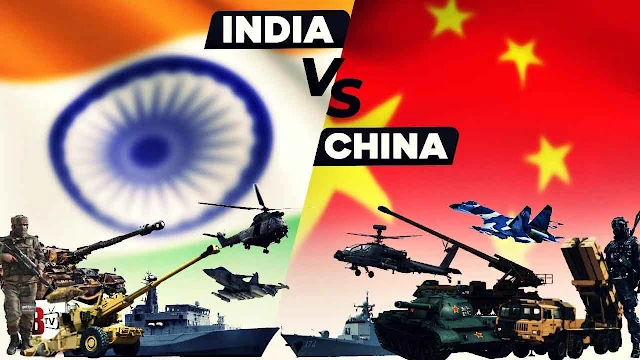India vs China: Hardened positions along the LAC – The long haul begins
Source : Financial Express
By Lt Gen Vinod Bhatia (Retd)
Much was expected from the 13th round of Corps Commander-level talks held at Moldo on 10 October. Irrespective of the PLAs recent aggressive behaviour in Barahoti, Uttarakhand and Yangtze in Arunachal Pradesh hopes of another disengagement from the friction point at Hot Springs along the Western sector in Eastern Ladakh was on the cards. However, the press release by Beijing and Delhi post the talks are indicative of a hardened position as both prepare for the long haul with an equal and proportional deployment by the Indian Armed Forces along the Line of Actual Control (LAC).
In a departure from earlier statements on the subject, which were conciliatory, the present statements are candid, as both sides position to safeguard their territorial integrity as per their own perceptions. It needs no reiteration that there is no common understanding of the LAC, which is a line of perceptions. The nine hour long meeting at Moldo led by Lt Gen PGK Menon, a well respected and regarded military leader, and his counterpart the South Xinjiang Military District chief failed to resolve the ongoing deadlock for the present. Beijing has accused India for “persisting in its unreasonable and unrealistic demands, which added difficulties to the negotiations”. The Indian stance rightly continues to be one of ‘ STATUS QUO ANTE’ as of Apr 2020. China unilaterally violated the four agreements on ‘Maintaining Peace and Tranquility’ along the LAC, shattering the nearly four decade old fragile peace.
Senior Colonel Long Shaohua, spokesperson for the Western Theatre Command of the People’s Liberation Army (PLA), said, “Instead of misjudging the situation, the Indian side should cherish the hard-won situation in China-India border areas.” The statement definitely sounds condescending, but in the same vein it is also an acknowledgement of India’s responsible and resolute response to China’s aggressive behaviour along the LAC. The spokesman went on to say that “the Indian side still persisted in its unreasonable and unrealistic demands, which added difficulties to the negotiations”. The Indian statement too is categorical, stating that the situation along the LAC had been caused by unilateral attempts of the Chinese side to alter the status quo, in violation of the bilateral agreements. It was therefore necessary that the Chinese side take appropriate steps in the remaining areas so as to restore peace and tranquility along the LAC in the Western Sector. While the Chinese may be willing to back down in Hot Springs and Demchock, it is the forward deployment at Depsang, which will be critical for India to resolve. It needs to be noted that within a month of Xi Jinping assuming the supreme leadership of China on 14 March 2013, the 19.5 Km deep incursion by the PLA took place on 14 Apr 2013, which was resolved after a 22 day standoff. This was the first such incident after Sumdrong Chu in 1986, and was preceded by similar violations in Chumar 2014 and Doklam 2017. This should have been a warning enough for India of the changed Chinese stance along the LAC.
The 13th round may not have yielded any positive outcomes, but the negotiations will continue. One of the positives is that after the Galwan incident there has been no escalation whatsoever. The most sensitive friction point on North Bank Pangong Tso which had a high probability of a ‘Spiral’ was resolved after India occupied the operationally important heights on the Kailash range on 30 August last year. The Government and the Army have been criticised by many for prematurely vacating the heights thus losing leverage during negotiations. Many feel that India lost the advantage and conceded much more and gained little. It needs to be understood that every ‘Quid Pro Quo’ option including the deployment on the Kailash range has a finite value in time and space. India achieved its objectives by demonstrating a strategic resolve and resilience in first occupying the Kailash range and then vacating it to ensure disengagement at Pangong Tso and Gogra. There are many more ‘ Kailash Ranges’ along the 3488 km long border, and China will find it difficult to match India’s deployment along the LAC. The army chief General Manoj Naravane, while on a visit to Leh, just prior to the taks, told the media that the military was matching Chinese deployments and was “quite well poised to meet any eventuality”. Some experts say that the recent push in Infrastructure development, operationalization of the erstwhile still born Mountain strike corps and deployment of state of the art Rafael aircraft and other assets signals India’s shift in posture towards China, from defensive to offensive, even as she seeks a negotiated settlement of status quo ante. China respects strength and India will need to negotiate with China from a position of relative strength.
The fact remains that India and China are prepared for the Long haul, with neither side demonstrating any indicators of any escalation as yet. It is in the interest of both Beijing and Delhi to resolve the ongoing ‘standoff’ along LAC through talks at the political, diplomatic and military level.
(The author is Former Director-General of Military Operations Indian Army. Views expressed are personal and do not reflect the official position or policy of Financial Express Online.)







No comments: